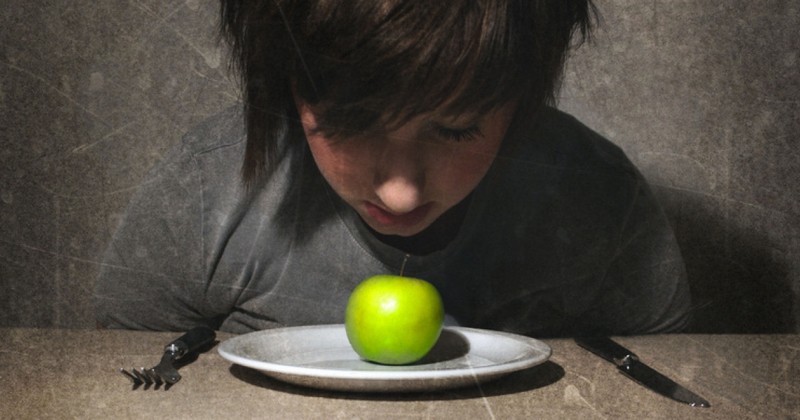Eating disorders and the internet: a dangerous mix

Some young girls may find bad role models on the Internet.
According to the Association Against Anorexia and Bulimia (ACAB), 11% of young Spaniards are at risk of suffering from some kind of eating disorder. This is a health problem that particularly affects girls, according to the World Health Organization (WHO). (WHO).
To this we must add another factor that enters into the problem: Internet content that encourages harmful or pathological eating dynamics..
Eating disorders and their footprint on the Internet
In the annual report carried out by the ACAB in collaboration with the Internet Quality Agency (IQUA) that analyzes the increase of content on the Internet related to serious eating disorders, shows that the group most prone to suffer from these diseases are young women and adolescents. (between 12 and 24 years of age). In addition, it is estimated that there is a high vulnerability among those who visit these web pages, since in most cases (75%) they are minors.
In summary, the misuse of social networks and their relationship with eating disorders is a problem that particularly affects underage girls, with a worrying prevalence. with a worrying prevalence.
Pathological hashtags
In a study by the Internet Quality Agency Quality Agency (IQUA) conducted in 2010 for the Image and Self-Esteem Foundation it was revealed that there were about 2,500,000 publications tagged with the hashtag #anorexia and almost 4,000,000 behind #ana and #mia..
Therefore, in 2012 the popular image-exposing and "like-addicted" network, Instagram, took action and included in its list of banned tags, (i.e., that would not get search results): #probulimia, #proanorexia, #loseweight, #thinspo, #thinspiration (thin "thinness" and "inspiration"), etc.
Unfortunately, this measure did not eradicate the problem. Proof of this were the results of the study Dangerous hashtags on social networks that Laura Martín-Péreza linguist at DAIL, published in the summer of 2015. In it, she discovered new techniques used by Internet users that made hashtags more difficult to track.
A problem that resists
Up to 1,005 combinations of tags that appeared next to #ana and #mia, such as #skinny (skinny) or recently, #thinspiration, the abbreviation of "thin" and "inspiration" (thin/inspiration), in addition to other tags that all psychologists would recommend monitoring and that go beyond the food issue, such as #sue (suicide), #deb (depression) or #cat (self-harm; suicide).
Internet as a risk environment
In a more recent study conducted in 2016, the. Table of Dialogue for the Prevention of Eating Disorders of Catalonia further examined our search habits, concluding that 31.6% go looking for "how to lose weight fast", 11.6% "extreme diets to lose weight", 10.8% pro-ana and pro-mia blogs and forums and 5.2% "how to vomit".
In addition, it was emphasized that frequenting social networks and spending hours online is associated with an increased risk of eating disorders. and body image concerns.
The conclusion that can be drawn is that our internet search habits reflect the extent to which we are not immune to the cultural pressure for the canons of beauty. Young teenagers are even more sensitive and prone to be negatively affected by these contents and, therefore, the use of social networks becomes a risky practice for this profile of Internet user (which does not mean that the web will be harmful in all cases).
The power of influencers
In 2015, model and Instagram star Essena O'Neill, 18, revealed to the world that behind every photo of her was a great deal of emotional suffering and food restriction and created a website to help other teens and young adults unhook from follows and likes. She was an influencerone of the most popular people on Instagram, and had more than 700,000 followers, a figure that gives an idea of the power of influence Essena had.
The weight that these young models have on the network is overwhelming, given that 88% of young women declare that they follow influencers through social networks, according to the 2016 Annual Social Media Study 2016, by IAB Spain. The fact that these types of role models on the network may be involved in potentially pathological eating dynamics is setting off alarm bells in several healthcare-related sectors.
Using the social network to combat pathology
The precedent generated by the young instagramer has led others to combat eating pathology on the network. These are initiatives in which use is made of the Internet to propagate the critical spirit and empowerment aimed at preventing the potential harmful effects of the Internet related to eating disorders..
Following the path of Essenia O'Neill, a young woman has been documenting her recovery on Instagram under the hashtag #anorexiarecovery. That is, she has reversed the pro-pathological use of the social network to set an example and promote a way of life away from eating disorders. In 2016 there are already several cases of new influencers who have followed in the footsteps of Essena O'Neill, and there are also punctual claims of celebrities who criticize the social pressures that keep many young women out of healthy habits.
Social networks are still potentially dangerous
Nevertheless, even today we can still consider social networks as potentially dangerous, at least for that at-risk group of girls and adolescents..
Laura Martin-Perez considers it quite easy to keep a record of these pathological labels, but it seems that the administrations do not apply measures along these lines, so there are not enough control measures on the contents that can have a negative and harmful impact on minors. The contents in which anorexia or bulimia are defended in a more or less veiled way are still a reality on the Internet.
So we must go one step further to fight against these publications, denouncing them as adult users.. Let us remember that minors do not yet have the critical eye that allows us to discern between health and extremism or pathology.
(Updated at Apr 13 / 2024)